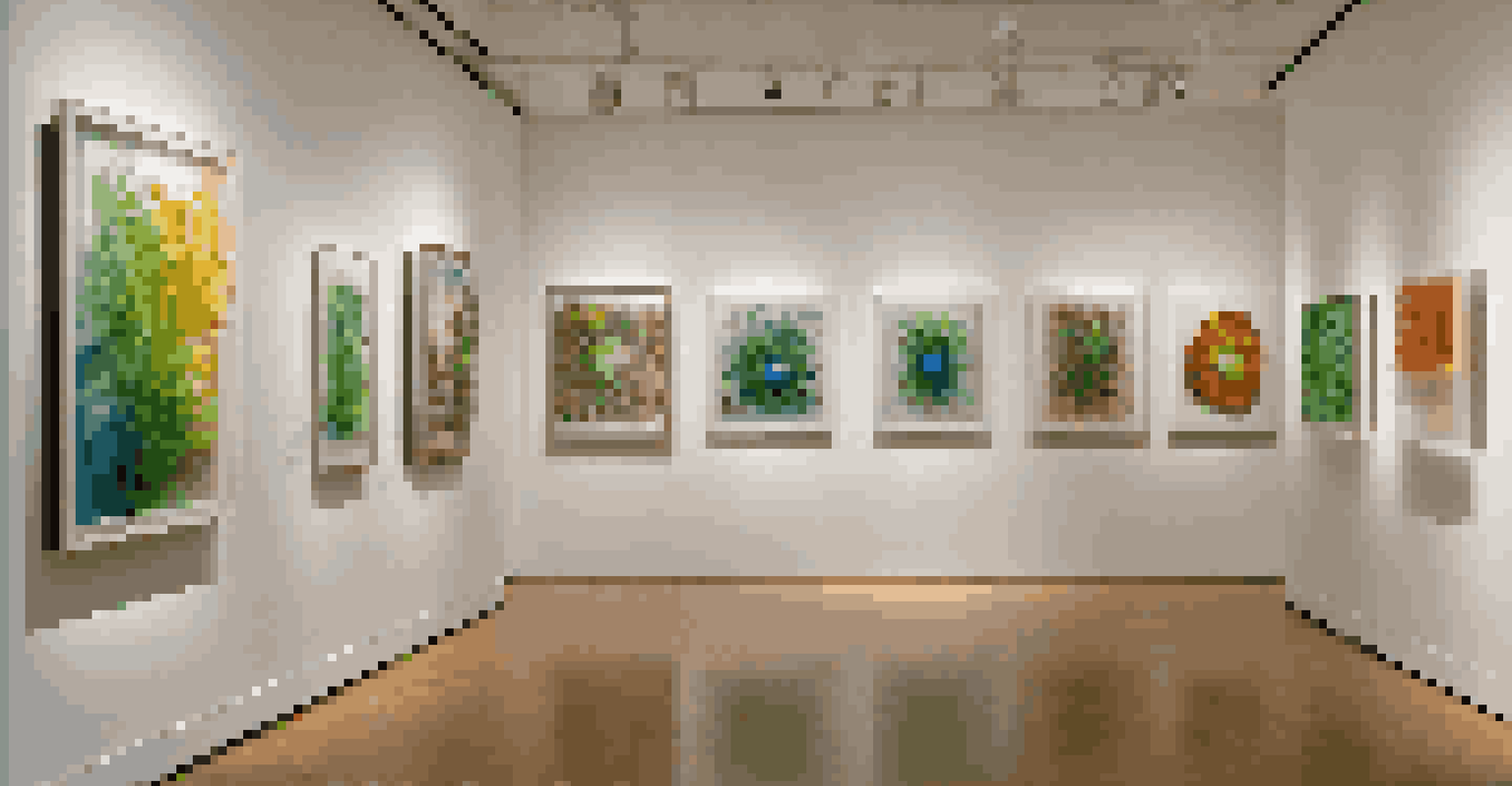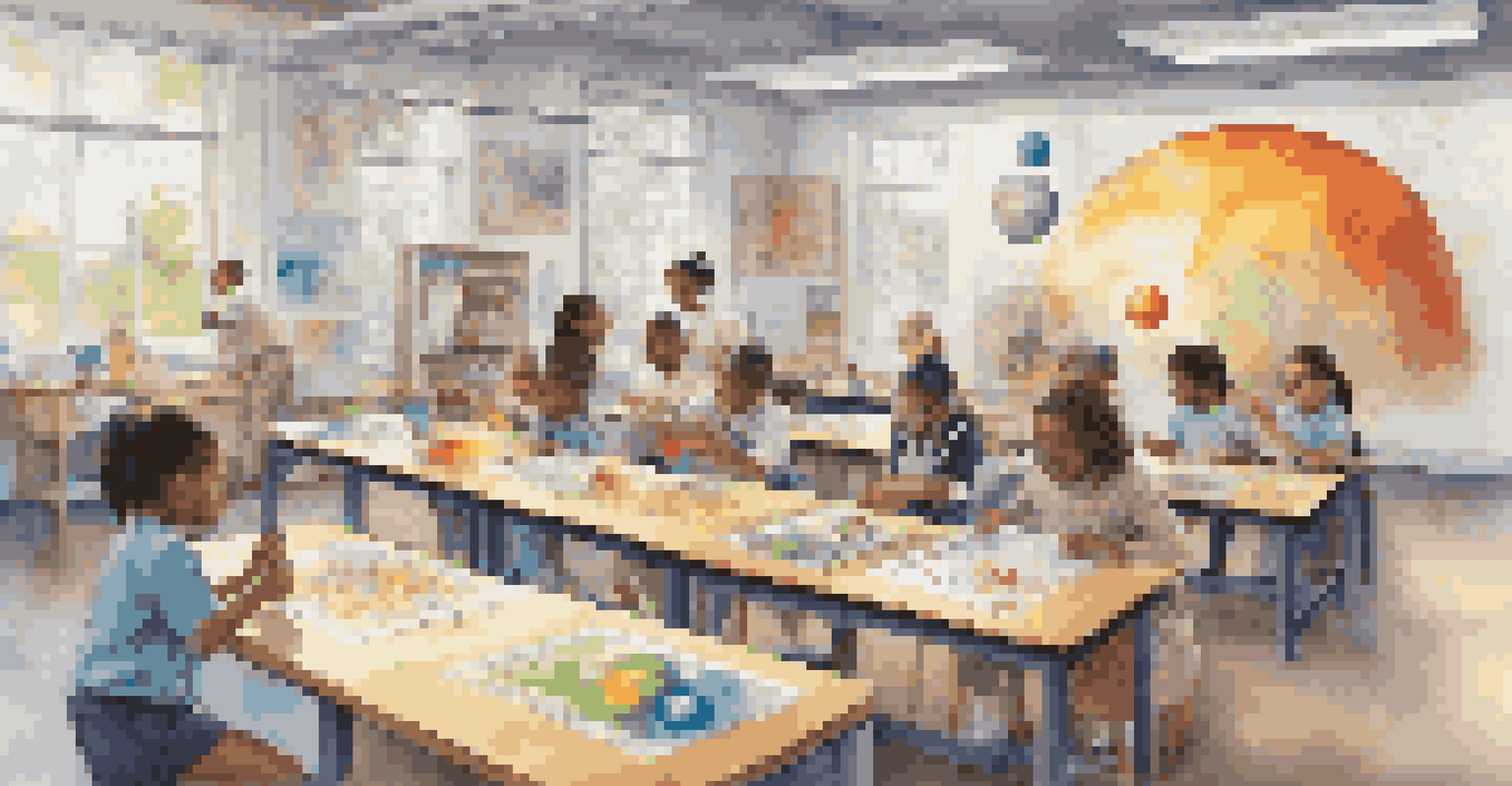Exploring the Connections Between Art and Science

Understanding the Foundations: Art Meets Science
At first glance, art and science may seem worlds apart, but they share a common foundation: creativity. Both fields rely on innovative thinking and the exploration of new ideas. Artists use their imaginations to create visually captivating pieces, while scientists apply creative methods to solve complex problems.
Art is the most beautiful of all lies; it is the truth of our emotions.
For instance, consider Leonardo da Vinci, who seamlessly blended artistic talent with scientific inquiry. His anatomical sketches were not just artistic expressions but also groundbreaking studies that advanced our understanding of the human body. This fusion of art and science encourages us to think outside the box.
Ultimately, both disciplines challenge us to observe the world differently. By appreciating the underlying connections, we can foster a deeper understanding of the universe and our place within it.
The Role of Observation in Both Disciplines
Observation is a crucial skill shared by artists and scientists alike. Artists meticulously study their subjects, capturing details that often go unnoticed. This keen observation enhances their ability to represent reality, whether through painting, sculpture, or photography.

Similarly, scientists rely on careful observation to gather data and draw conclusions. The scientific method emphasizes the importance of observing phenomena to formulate hypotheses. In essence, both artists and scientists are keen observers, translating their findings into their respective mediums.
Art and Science Share Creativity
Both art and science rely on creativity to explore new ideas and challenge our understanding of the world.
This shared focus on observation highlights the importance of attention to detail, which is vital in both creating art and conducting experiments. By honing this skill, individuals can enhance their work in either field.
Creativity: The Driving Force Behind Innovation
Creativity fuels innovation in both art and science, driving breakthroughs that reshape our understanding. Artistic innovation often leads to new styles and movements, while scientific creativity results in discoveries that can revolutionize technology and medicine. Think of the Impressionists, whose novel approaches transformed the art world.
Science knows no country, because knowledge belongs to humanity, and is the torch which illuminates the world.
In science, consider how the invention of the microscope opened up a whole new realm of exploration. Both scenarios illustrate how creative thinking can lead to significant advancements. When artists experiment with materials or techniques, and scientists explore unconventional ideas, they push the boundaries of their fields.
Thus, embracing creativity is essential for anyone looking to make a meaningful impact, whether through a paintbrush or a laboratory experiment.
Interdisciplinary Collaboration: A Powerful Synergy
The collaboration between artists and scientists can yield remarkable outcomes. When these two worlds collide, they create innovative solutions that neither could achieve alone. For example, the field of bioart combines biology and art, allowing artists to create living sculptures that challenge our perceptions of life and nature.
Moreover, collaborative projects can lead to new ways of communicating scientific concepts. Artists can visualize complex data, making it more accessible and engaging for the public. This intersection of art and science not only enhances understanding but also inspires curiosity.
Observation is Key in Both Fields
Keen observation enhances the work of artists and scientists, allowing them to capture details and draw meaningful conclusions.
Such interdisciplinary efforts remind us that creativity knows no boundaries. By working together, artists and scientists can address pressing global issues with fresh perspectives.
Art as a Medium for Scientific Communication
Art serves as a powerful tool for communicating scientific ideas to a broader audience. Visual representations, like infographics or illustrations, can simplify complex information, making it more digestible. This approach engages viewers and sparks their interest in scientific topics.
For instance, consider how artists depict climate change through powerful imagery. These artworks evoke emotions, prompting viewers to reflect on environmental issues. By bridging the gap between data and emotion, art can drive awareness and inspire action.
Ultimately, art transforms scientific communication from dry facts to relatable stories, creating a lasting impact on society.
The Emotional Connection: Art and the Human Experience
Art evokes emotions, while science often seeks to explain human behavior. By exploring the emotional aspect of scientific phenomena, artists can create works that resonate deeply with audiences. This emotional connection can drive interest in scientific topics and encourage a more profound understanding.
Consider the relationship between art and mental health. Art therapy harnesses the creative process to promote healing and emotional well-being. By merging artistic expression with psychological insights, individuals can explore their feelings in a supportive environment.
Collaboration Sparks Innovation
Interdisciplinary collaboration between artists and scientists leads to innovative solutions and enhances public understanding of complex issues.
This interplay between emotion and understanding highlights how art can complement scientific exploration, enriching our experience of both fields.
Conclusion: The Future of Art and Science Together
As we look to the future, the collaboration between art and science is likely to grow even stronger. The challenges we face, from climate change to health crises, require innovative thinking that draws on the strengths of both disciplines. By fostering an environment where creativity and inquiry coexist, we can tackle these issues more effectively.
Educational institutions are beginning to embrace this interdisciplinary approach, encouraging students to explore both art and science. This shift prepares future generations to think critically and creatively, equipping them with the skills needed to navigate an increasingly complex world.

Ultimately, the connections between art and science enrich our understanding of the universe and ourselves. By celebrating these relationships, we open up new pathways for exploration and innovation.